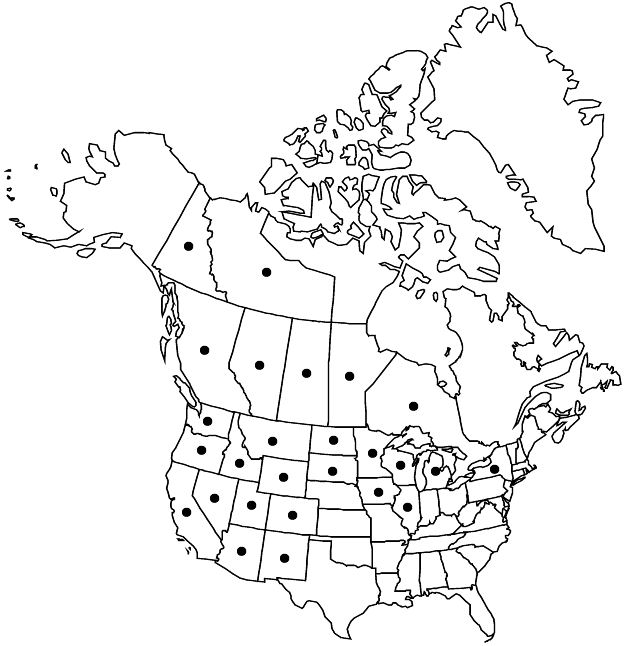Geum triflorum
Fl. Amer. Sept. 2: 736. 1813.
Plants subscapose. Stems 10–45 cm, downy to pilose, hairs 0.1–3 mm, sometimes septate-glandular. Leaves: basal 4–30 cm, blade interruptedly pinnate, major leaflets 10–18, alternating with 6–16 minor ones gradually increasing in size distally, terminal leaflet slightly larger than major laterals; cauline 1–5 cm, stipules adnate to leaf, indistinguishable from leaflets/lobes, blade bractlike, not resembling basal, opposite, pinnate-pinnatifid. Inflorescences (1–) 3–5 (–7) -flowered. Pedicels densely woolly, sometimes glandular. Flowers nodding, erect in fruit; epicalyx bractlets 6–15 mm; hypanthium maroon, purple, or greenish mottled with purple, may turn pale-brown in fruit; sepals erect, 7–14 mm; petals erect, cream to yellowish suffused with pink or purple, or purple-veined, elliptic, 7–13 mm, shorter to longer than sepals, apex rounded to obtuse. Fruiting tori sessile, densely puberulent. Fruiting styles wholly persistent or distal 3–7 mm tardily deciduous, not or inconspicuously geniculate-jointed, 15–70 mm, apex not or occasionally ± hooked, pilose to apex or nearly so.
Distribution

Alta., B.C., Man., N.W.T., Ont., Sask., Yukon, Ariz., Calif., Colo., Idaho, Ill., Iowa, Mich., Minn., Mont., N.Dak., N.Mex., N.Y., Nev., Oreg., S.Dak., Utah, Wash., Wis., Wyo., Mexico
Discussion
Varieties 2 (2 in the flora).
At the beginning of the twentieth century, E. L. Greene described over a dozen species belonging to the Geum triflorum complex based on differences in leaf form and indument, the relative length and shape of the epicalyx bractlets and sepals, and petal length and shape. Most of these species were quickly reduced to synonymy by other botanists. When specimens are examined from across the continent, most of the characters used to separate species in the G. triflorum complex show nearly continuous variation. It seems best to treat these variants as belonging to one species. Whether and how to classify the variation within the species will remain controversial. Some character expressions correlate reasonably well with dividing the species into two varieties, as was first proposed by N. C. Fassett (1928). Variety triflorum occurs east of the Rocky Mountains and is typical of the grasslands covering the northern Great Plains; it also is the variety found in the mountains of Arizona and New Mexico. Variety ciliatum is common throughout the rest of the Rocky Mountains, the Sierra Nevada, and Cascade Range. Intermediate specimens occur here and there, particularly in Alberta and British Columbia.
Selected References
None.
Key
| 1 | Basal leaves with larger leaflets toothed or cleft less than 1/2 their lengths; fruiting styles persistent, 28–70 mm. | Geum triflorum var. triflorum |
| 1 | Basal leaves with larger leaflets cleft more than 1/2 their lengths; fruiting styles: proximal segments persistent, 15–40 mm, distal segments tardily deciduous, 3–7 mm. | Geum triflorum var. ciliatum |
"thin" is not a number."elongating" is not a number. "elongating" is not a number.